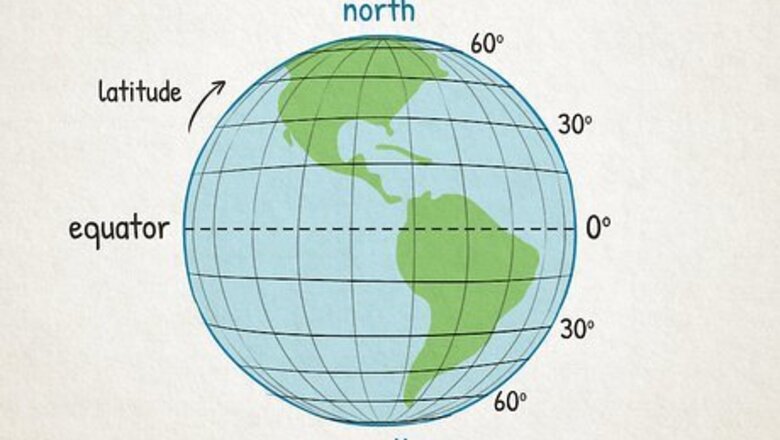
views
Understanding Latitude and Longitude
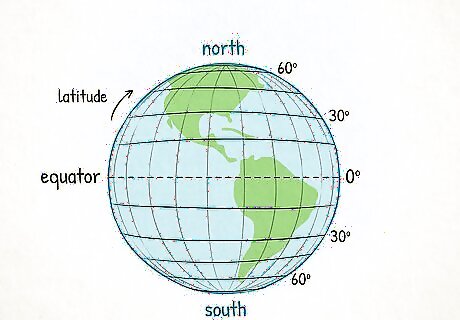
Understand latitude. Latitude measures how far a point is north or south of the equator. Since the earth is round, distance from the equator is measured in angular degrees with the equator being 0 degrees and the northernmost point -- the North Pole -- being at 90 degrees. The southernmost point -- the South Pole -- is also at 90 degrees. Latitude is measured in degrees north when in the northern hemisphere and degrees south when in the southern hemisphere.
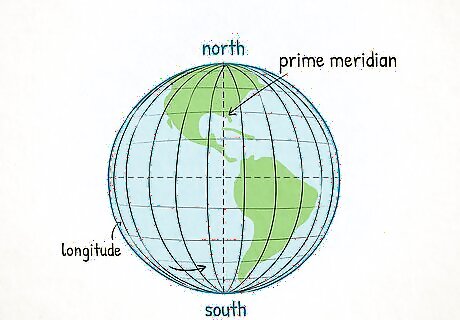
Understand longitude. Longitude measures how far a point is east or west of the prime meridian -- arbitrarily set as Greenwich, England. Since the Earth is round, distance from the prime meridian is measured in angular degrees with the prime meridian being at 0 degrees longitude. As you move east or west, the longitude measures up to 180 degrees of the prime meridian. 180 degrees longitude is known as the international dateline. Longitude is given as degrees east when in the eastern hemisphere and west when in the western hemisphere.
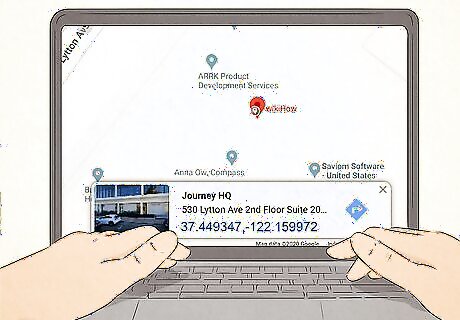
Know the accuracy of your readings. Degrees are a large unit of measurement so to get an accurate location, longitude and latitude are divided to the decimal point referred to as decimal degrees. For example, you may see latitude as 35.789 degrees North. Global Position Systems (GPS) often show decimal degrees but printed maps do not. Online topographic maps express longitude and latitude decimal degrees in degrees, minutes and seconds. Each degree equals 60 minutes, while each minute equals 60 seconds. The comparison to time allows for easier subdivision.
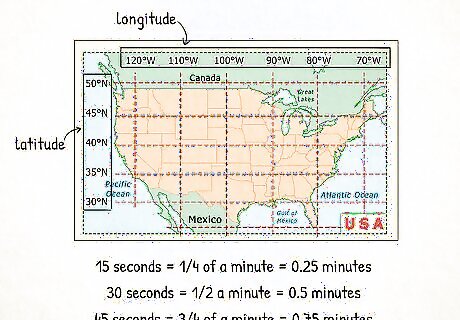
Understand how they appear on a map. First, always assume that the top of the map is north.The numbers on the right and left side of a map refer to the latitude. The numbers on the top and bottom of the map are the longitude. Remember how to convert time in order understand a map using decimal degrees as degrees, minutes, and seconds: 15 seconds = one quarter of a minute = 0.25 minutes 30 seconds = half a minute = 0.5 minutes 45 seconds = three quarters of a minute = 0.75 minutes
Using a Map
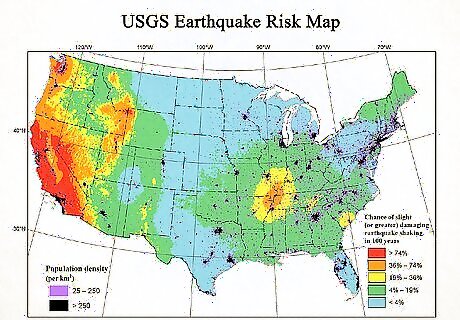
Obtain a USGS map. A U.S. Geological Survey map is standardized map created by the National Cooperative Geologic Mapping Program under the U.S. Department of the Interior. You can find these maps at your local libraries or obtain them from surveyors or other commercial dealers.
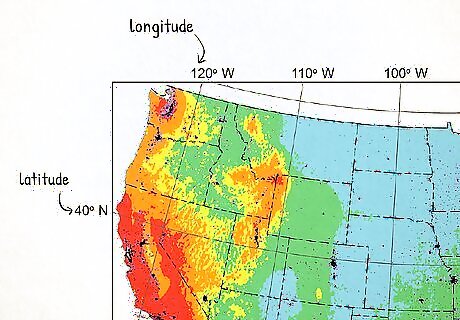
Look for the latitude and longitude. These measurements are often in the corner of the map. Beneath the title you may also notice how far the map covers. For example, a map may say that it's a 7.5 minute map, which means that the area the map shows is 7.5 minutes of latitude and longitude.
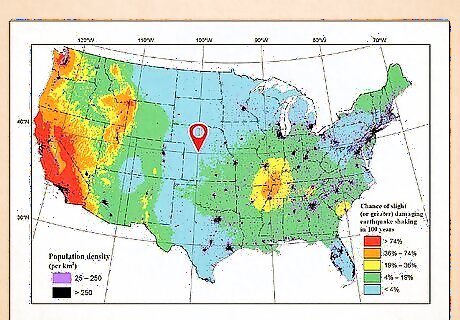
Find the location. Depending on the scale of your map, it may take some time to find your location. Note the city, town, or specific point on the map that denotes your current position. Once found, mark your location. The map legend will tell you the scale of the map so that you may quickly estimate distance relative to known landmarks if you do not know the name of your city. This may help you find your location more quickly. Depending on what you’re trying to locate, make sure you’re using a map with an appropriate scale. If you want to find how far a state is from your own, you would want to use a map of the United States rather than one of the world.
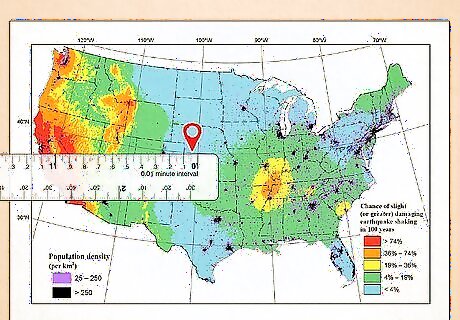
Use a map ruler to check the degrees. Measure from your location outwards from the map to the straightest numbered line of latitude or longitude. The map will be divided into both vertical and horizontal lines to represent the measurements of longitude and latitude. The 4 corners of your map will display the coordinates of both the longitude and latitude fully written out. Only the final two digits will be shown for all other points in between. Your map should have the lines of latitude and longitude forming a grid and dividing it into cross sections. A map ruler is easy to use and can be purchased at an outdoor supply store or online. Make sure that your map ruler corresponds to your USGS 1:24,000 scale map series. Measure latitude first. The lines of latitude will be north and south parallels to your location. Place the zero end of your map ruler on the southern parallel. The next parallel to the north should be touched by the 2 ½ minute end. One edge of the ruler will be marked in minutes and seconds while the other edge is decimal minutes. Make sure to use the correct edge that corresponds to the coordinate format of your map. Slide the ruler to the right -- or to the west -- until it touches your location. Mark how much distance is between the southern parallel to your location. Add this to the latitude of the southern parallel to get the latitude of your location. To measure the longitude you must place the ruler diagonally on the west and east meridians with the ends of the 2 ½ minute ruler touching both meridians. The lines of longitude on your map will be the east and west meridians of your location. You must measure diagonally because if you measure horizontally, the ruler extends past the grid because the meridians of longitude grow closer as they move from the equator. Move the ruler vertically until you find your location making sure to keep both ends of the ruler on the meridians at a diagonal. Record where your location is -- in minutes and seconds -- west of the eastern meridian. To find the the longitude of your location, add your measurement to the longitude of the eastern meridian.
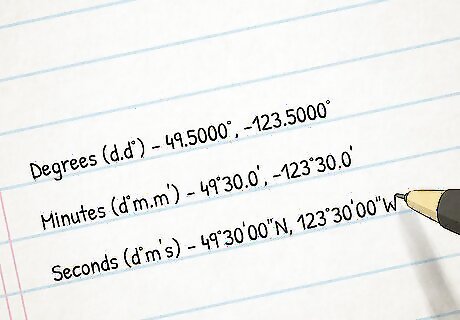
Write your coordinates down. The standard procedure is to write the latitude first, followed by the longitude, with both written to as many decimals as possible. The more decimals you are able to achieve, the more accurate and precise the location. When writing down your coordinates, you may format latitude and longitude in three different ways Degrees (d.d°) - 49.5000°, -123.5000° Minutes (d°m.m') - 49°30.0', -123°30.0' Seconds (d°m's) - 49°30'00"N, 123°30'00"W When dealing with latitude and longitude, the North - South and East - West designators are removed and replaced with negative values for points south of the equator.
Measuring Using a Protractor
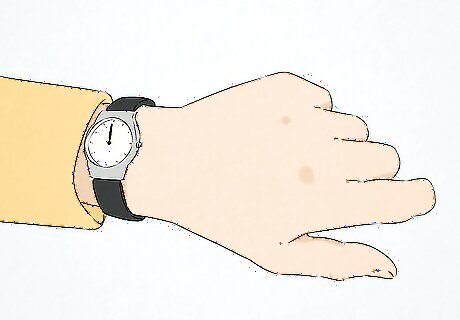
Make sure that it is noon. Determining the latitude with the sun can only be done when it is at its highest point. Check your watch or you may use the method of creating a quadrant and placing a stick in the ground, at the very southern end of a north-south line. It’s noon as soon as the shadow of the stick crosses the north-south line. Use a plumb line to ensure that the stick is vertical. A plumb line is exactly as it sounds: a line with any type of plumb attached to it. Gravity will ensure that the plumb creates a vertical line.
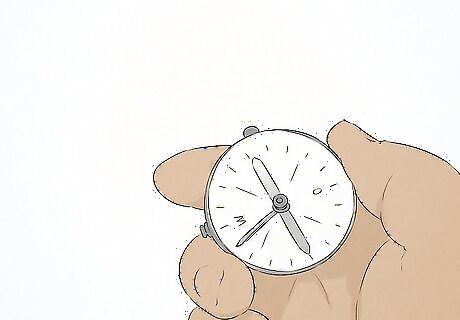
Use a compass to establish north and south. You may only set up your measurements knowing north and south. Mark north and south with a line running along the ground. Set up a quadrant with its aiming beam parallel to this line.
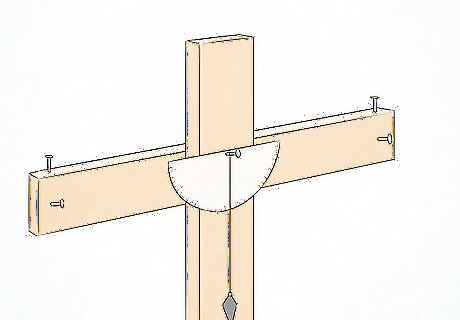
Create a quadrant, or cross, using two pieces of wood. The aiming beam -- or hands of the cross -- should be centered on the support beam-- or body of the cross -- so that it can pivot up and down. There should be 4 nails at the hands of the cross, each only pounded far enough to keep it stable. There should be 2 nails at either end of the face of the cross and 2 nails at either end of the top of the hands of the cross. Center a protractor at the pivot point. Suspend the plumb line also from this pivot point.
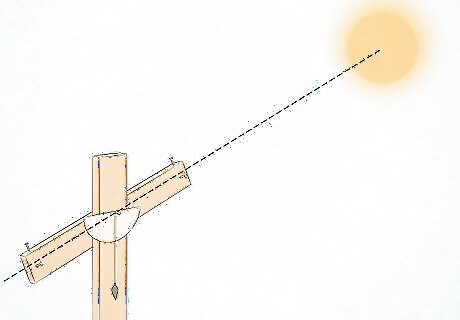
Align the sighting nails of the quadrant with the sun. Once noon, line up the nails on the aiming beam with the sun. Do not look directly at the sun but rather use the shadows of the nails to find the correct position. Move the aiming beam up and down so that the two shadows from the nails move closer together and create a single shadow on the ground.
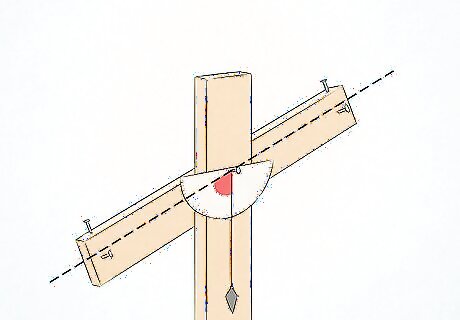
Use the protractor to measure the small angle between the beam and the plumb line. Once the beam is aimed correctly, use the protractor to measure from the vertical plumb line to the portion of the aiming beam closest to it. Keep the horizon at 90 degrees as you make your measurements.
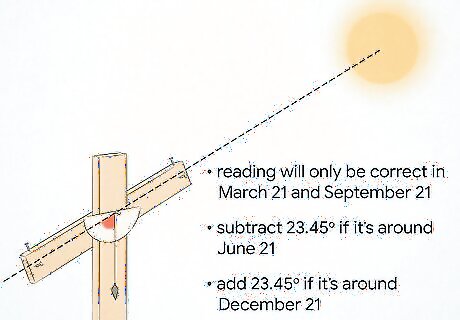
Understand that the time of year plays into the accuracy of your reading. Your reading will only be correct in both the spring and autumn equinoxes that fall on March and September 21 respectively. If you are taking measurements around December 21, or midwinter, subtract 23.45 degrees from your reading. In contrast, add 23.45 degrees if you are taking measurements around midsummer, June 21. The measurements are not completely accurate, other than spring and autumn equinox, because of the way the Earth is tilted as it orbits around the sun. While there are complex tables that give you the correct factor to determine your exact latitude and longitude on any given day, accurately estimate based on the date relative to the spring and autumn equinox. For example, if you are measuring at the start of May, which is half-way between the spring -- when the sun is directly above the equator -- and summer equinox -- when the sun is above 23.45 degrees north of the Equator, you would just need to add half of 23.45 degrees -- 11.73 -- to your measurement.










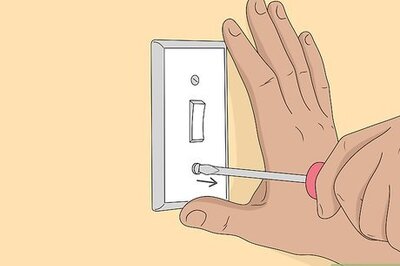
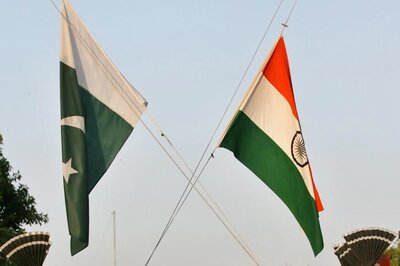
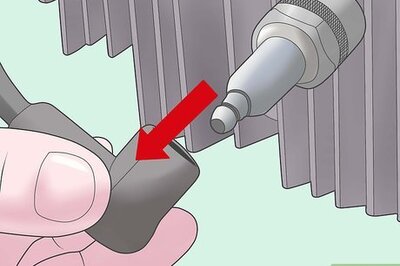




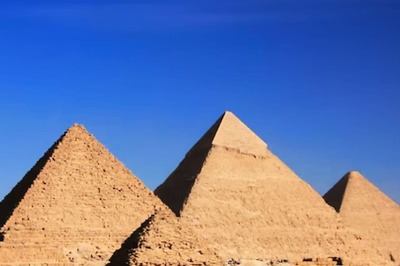


Comments
0 comment